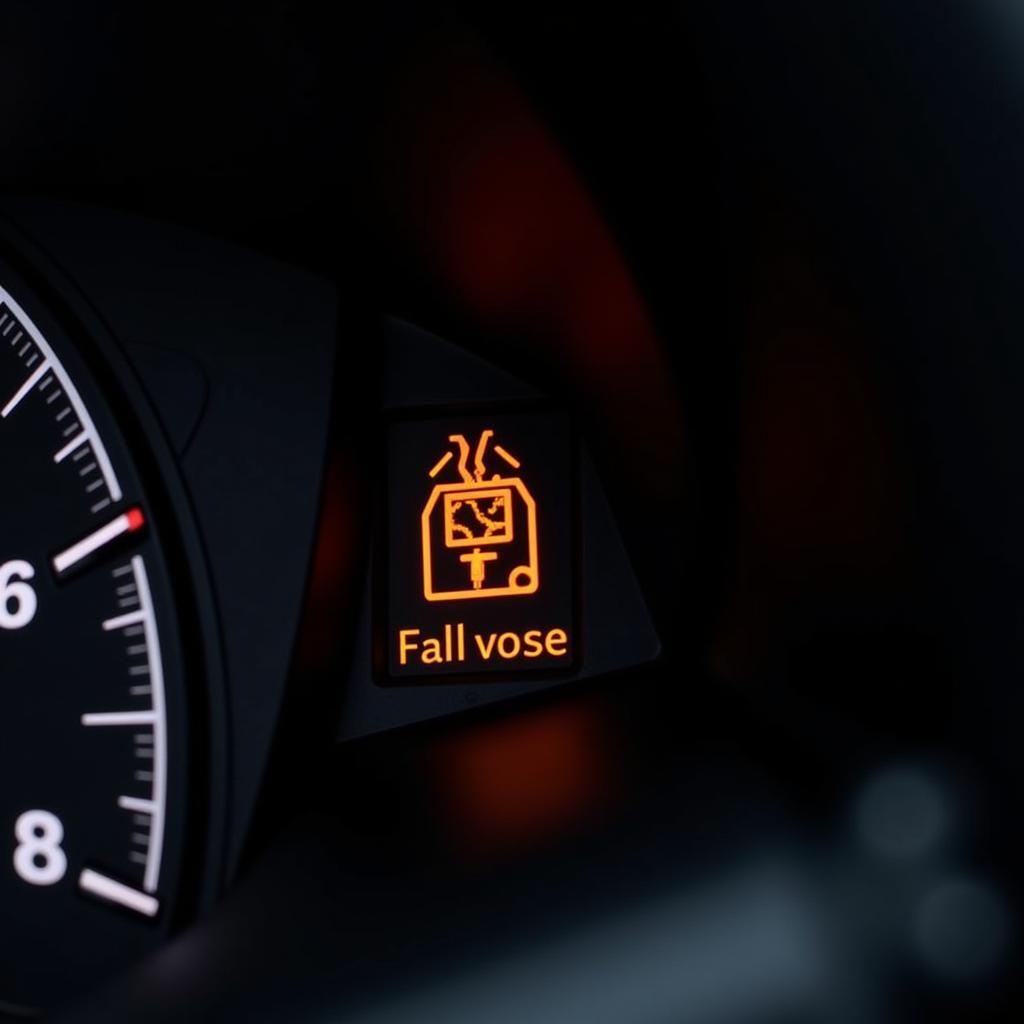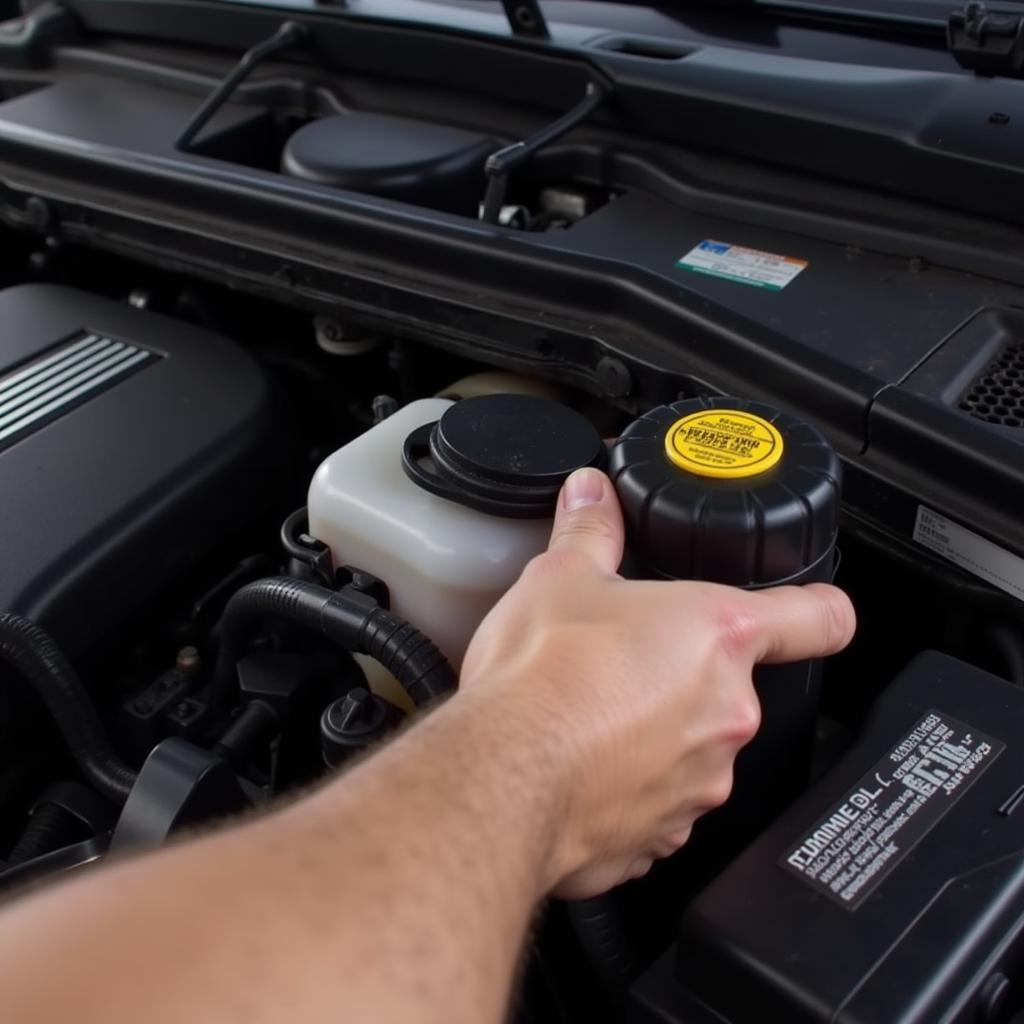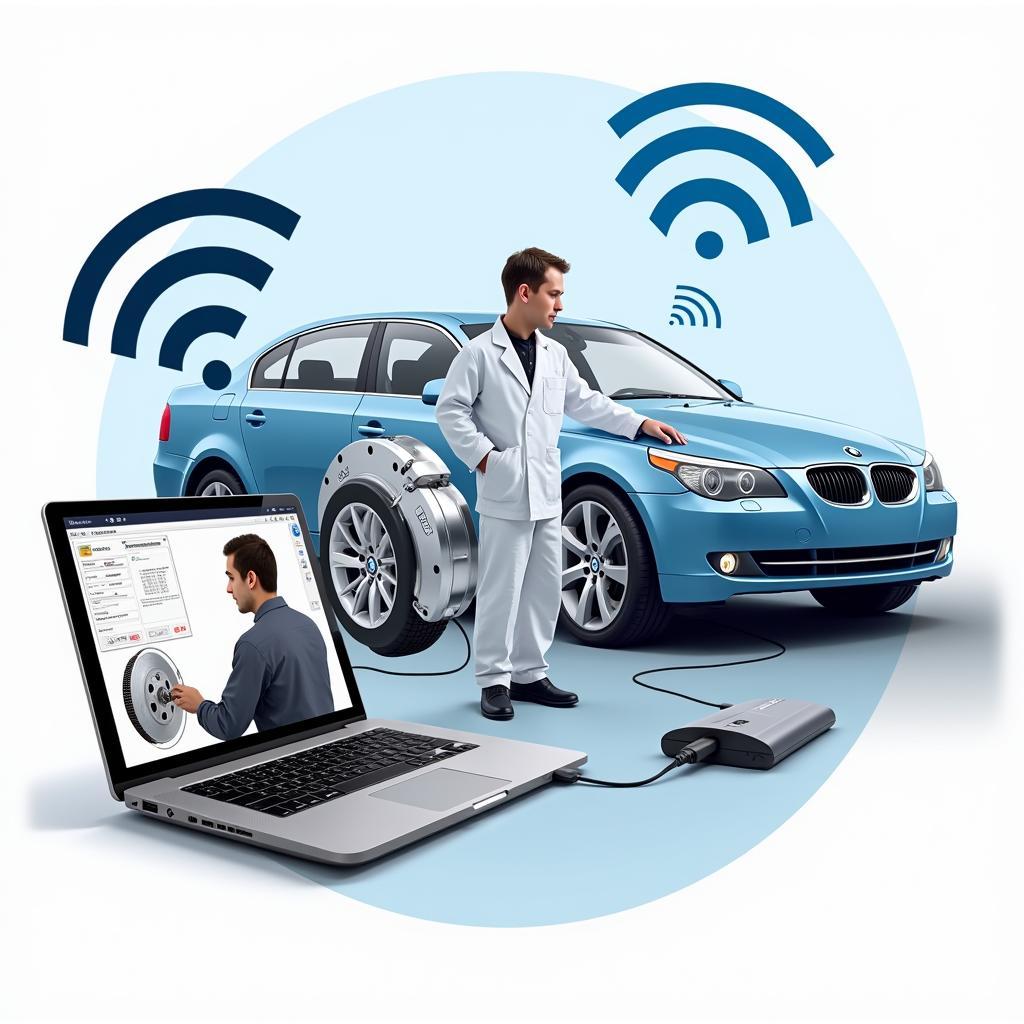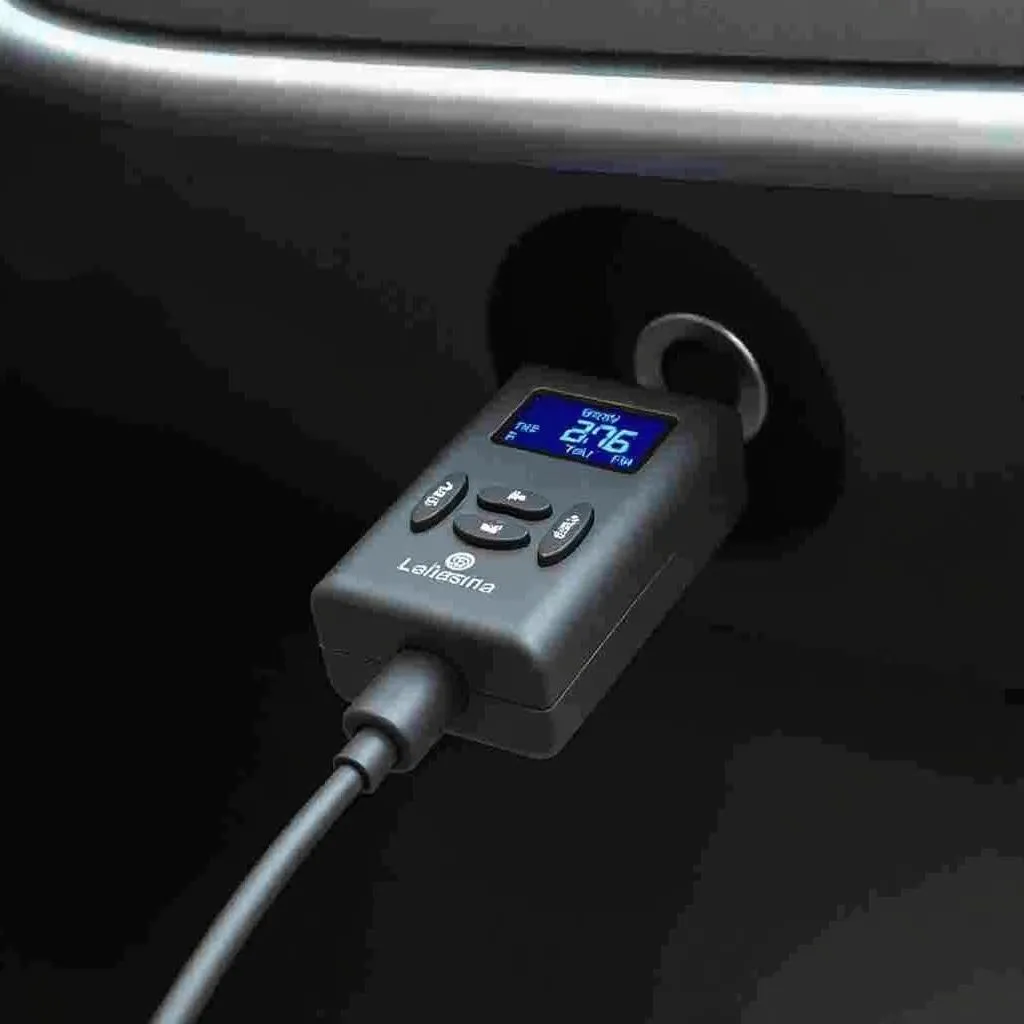The BMW E90, a popular model produced from 2005 to 2012, is known for its performance and luxury. However, even the most reliable vehicles can experience issues, and one common problem E90 owners may encounter is the dreaded brake warning symbol illuminating on the dashboard. This amber or red symbol, often accompanied by a chime sound, signals a potential problem within the braking system. Ignoring it could compromise your safety and lead to costly repairs. This article delves into the common causes of the BMW E90 brake warning light and provides a step-by-step guide to help you diagnose and potentially fix the issue.
Understanding Your BMW E90’s Brake System
Before we dive into the troubleshooting, it’s essential to have a basic understanding of your E90’s brake system. This knowledge will help you better comprehend the potential causes and solutions. Your E90 utilizes a sophisticated Anti-lock Braking System (ABS) designed to prevent wheel lock-up during hard braking, ensuring vehicle stability and control.
Several components work together seamlessly to ensure optimal braking performance, including:
- Brake Pedal: Pressing the pedal initiates the braking process.
- Brake Fluid: This hydraulic fluid amplifies the force applied to the brake pedal and transmits it to the wheels.
- Master Cylinder: This component pressurizes the brake fluid when the pedal is depressed.
- Brake Lines: These lines carry the pressurized fluid to each wheel.
- Calipers and Pistons: These components squeeze the brake pads against the rotors, creating friction to slow down or stop the vehicle.
- Brake Pads and Rotors: These wear-and-tear components generate the friction needed to stop the vehicle.
A problem with any of these components can trigger the brake warning symbol.
Common Causes of the BMW E90 Brake Warning Symbol
The brake warning symbol on your E90’s dashboard can be triggered by a range of issues, from minor to serious. Here are some of the most common culprits:
1. Worn Brake Pads
Brake pads are designed to wear down over time. When they become too thin, a sensor embedded within the pad triggers the warning light.
2. Low Brake Fluid Level
Brake fluid is the lifeblood of your car’s braking system. A leak in the system or worn-out brake pads can lead to a drop in brake fluid level, illuminating the warning light.
3. Faulty Brake Pad Wear Sensors
While these sensors are generally reliable, they can malfunction, triggering the warning light even if the brake pads are in good condition.
4. Brake Fluid Leak
A leak in the brake lines, calipers, or wheel cylinders can cause a loss of brake fluid and activate the warning light.
5. ABS Sensor Issues
The ABS system relies on sensors at each wheel to function correctly. A faulty sensor can disrupt the system and illuminate the warning light.
6. Faulty ABS Module
While less common, a malfunctioning ABS module can also trigger the brake warning symbol.
 BMW E90 Brake Warning Light on Dashboard
BMW E90 Brake Warning Light on Dashboard
Diagnosing the Problem: A Step-by-Step Guide
Before heading to the mechanic, you can perform some basic checks to narrow down the potential cause of the brake warning symbol on your E90.
1. Check Brake Fluid Level
- Locate the brake fluid reservoir under the hood.
- Check the fluid level. It should be between the “Min” and “Max” markings.
- If the level is low, add the appropriate DOT 4 brake fluid, but be cautious not to overfill.
2. Inspect Brake Pads and Rotors
- If possible, remove a wheel to inspect the brake pads and rotors visually.
- Look for signs of excessive wear on the brake pads.
- Check the rotors for any scoring or grooves.
- If you notice significant wear or damage, it’s best to have the pads and rotors replaced by a qualified mechanic.
3. Scan for Diagnostic Trouble Codes (DTCs)
- If you own or have access to a BMW-specific OBD-II scanner, you can scan for DTCs related to the brake system.
- These codes can provide valuable insights into the underlying cause of the warning light.
 Checking Brake Fluid Level in BMW E90
Checking Brake Fluid Level in BMW E90
When to Seek Professional Help
If your initial checks don’t reveal a simple fix, or if you’re uncomfortable working on your vehicle’s brake system, it’s crucial to seek help from a qualified mechanic specializing in BMW vehicles.
“Addressing brake issues promptly is paramount for safety,” says Jake Carter, a certified BMW technician with over 15 years of experience. “Ignoring warning signs can lead to more extensive damage and compromise your well-being on the road.”
Remote Software Solutions for BMW E90 Brake Issues
In some cases, the brake warning light might be triggered by software glitches within your vehicle’s electronic control units (ECUs). These modules control various aspects of your E90’s braking system. Remote software solutions, like those offered by specialized automotive service providers, can diagnose and potentially fix these software-related issues.
These services typically involve:
- Remote Diagnosis: A technician remotely connects to your vehicle’s onboard computer system to diagnose the issue.
- Software Updates: If a software bug is detected, the technician can install the latest software updates to rectify the problem.
- ECU Coding and Programming: In more complex situations, the technician can remotely reprogram or code your vehicle’s ECUs to resolve the brake warning issue.
 Remote Diagnostics for BMW E90 Brake System
Remote Diagnostics for BMW E90 Brake System
Conclusion
The brake warning symbol in your BMW E90 should never be ignored. By understanding the common causes and following the diagnostic steps outlined in this article, you can take the necessary actions to ensure your safety and keep your E90 performing at its best.
Remember, when in doubt, always consult with a qualified BMW mechanic. They possess the expertise and specialized tools to diagnose and address any brake-related issues effectively.

